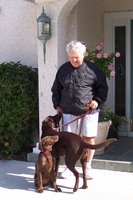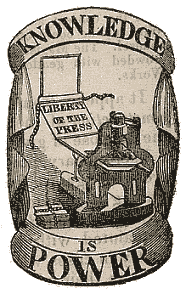


In the "hay days" of Marxist/Leninism there was only one left. That which Lenin brought to Russia from Carl Marx in Germany, Communism. In Russia, beginning in 1917, you were a Communist party member if you were chosen to be one.If you were not a member of the Communist party. You obeyed their rules or you were sent to the Gulag or shot!
Today here in the USA we have two Lefts. The dupes of the Leftist philosophy who have bought into the Peace movement as a way to save the World, and the "hard-core" Marxist-Socialists found in every College and University, and unfortunately in the groups known for their wealth and success in every area of endeavor other than government.
Dennis Kucinich in the U.S. House of Representatives, George Soros, the Media and the mega-wealthy and the Hollywood elite represent the second Left in America. They hate everything about the way our Government is run today. Today President Bush is the "hate object", and they will stop at nothing to change our beloved Country to their "Utopian" way.
Congressman Dennis Kucinich has introduced House resolution 808, that has 60 co-sponsors. This bill if ever passed, would create a Cabinet level position of Secretary of Peace. The area of his/her responsibility would be to create an Academy of Peace with curriculum developed for primary and secondary schools that would be mandated for the teaching of the Peace Process. It would provide funding for grants to select professors and students who make this their area of study.
This sounds like a good idea. After all who wouldn't prefer Peace to War? But history tells us, if we would only listen, that the way to Peace is to be strong not weak! Carl von Clauswitz advised this over one hundred years ago. The Peace movement doesn't want this!
In the United States, the peace movement is preparing young students to become virulent haters of our nation.
The people running today’s peace studies programs give a good idea of the movement’s liberal, anti-American inclinations. The director of Purdue’s program is co editor of Marxism Today, a collection of essays extolling socialism; Brandeis’s peace studies chairman has justified suicide bombings; the program director at the University of Missouri authorized a mass e-mail urging students and faculty to boycott classes to protest the Iraq invasion…
...First and foremost, they (Peace Movement leaders) emphasize that the world’s great evil is capitalism—because it leads to imperialism, which in turn leads to war. The account of capitalism in David Barash and Charles Webel’s widely used 2002 textbook Peace and Conflict Studies leans heavily on Lenin, who “maintained that only revolution—not reform—could undo capitalism’s tendency toward imperialism and thence to war,” and on Galtung,the anointed Father of today's Peace Movement in 1959, who helpfully revised Lenin’s theories to account for America’s “indirect” imperialism. Students acquire a zero-sum picture of the world economy: if some countries and people are poor, it’s because others are rich. They’re taught that American wealth derives entirely from exploitation and that Americans, accordingly, are responsible for world poverty.
..."The Peace Movement" maintains that the Western world’s profound moral culpability, arising from its history of colonialism and economic exploitation, deprives it of any right to judge non-Western countries or individuals. Further, the non-West has suffered so much from exploitation that whatever offenses it commits are legitimate attempts to recapture dignity, obtain justice, and exact revenge.
It is this mind-set that leads peace professors to accuse the U.S. of “state terrorism,” to call George W. Bush “the world’s worst terrorist,” and even to characterize those murdered in the Twin Towers as oppressors who, by working at investment banks and brokerage houses, were ultimately responsible for their own deaths.
In their distorted view, it’s America that is the wellspring of the world’s problems. In the peace studies world, America’s role as the beacon of opportunity for generations of immigrants is mocked, its defense of freedom in World War II and the cold war is reinterpreted to its discredit, and every major postwar atrocity (the Gulag, the Cultural Revolution, genocide in Cambodia, Bosnia, Rwanda, and Sudan) is ignored, minimized, or—as with 9/11—blamed on the U.S. itself." preceding courtesy of Bruce Bawer of "CityJournal website.
Galtung is in fact a lifelong enemy of freedom. In 1973, he thundered that “our time’s grotesque reality” was—no, not the Gulag or the Cultural Revolution, but rather the West’s “structural fascism.” He’s called America a “killer country,” accused it of “neo-fascist state terrorism,” and gleefully prophesied that it will soon follow Britain “into the graveyard of empires.”
Though Galtung has opined that the annihilation of Washington, D.C., would be a fair punishment for America’s arrogant view of itself as “a model for everyone else,” he’s long held up certain countries as worthy of emulation—among them Stalin’s USSR, whose economy, he predicted in 1953, would soon overtake the West’s. He’s also a fan of Castro’s Cuba, which he praised in 1972 for “break[ing] free of imperialism’s iron grip.” At least you can’t accuse Galtung of hiding his prejudices. In 1973, explaining world politics in a children’s newspaper, he described the U.S. and Western Europe as “rich, Western, Christian countries” that make war to secure materials and markets: “Such an economic system is called capitalism, and when it’s spread in this way to other countries it’s called imperialism.” In 1974, he sneered at the West’s fixation on “persecuted elite personages” such as Solzhenitsyn and Sakharov. Thirty years later, he compared the U.S. to Nazi Germany for bombing Kosovo and invading Afghanistan and Iraq. For Galtung, a war that liberates is no better than one that enslaves.
Galtung’s use of the word “peace” to legitimize totalitarianism is an old Communist tradition. In August 1939, when the Nazis and Soviets signed their nonaggression pact, the same Western Stalinists who had been calling for war against Germany did an about-face and began to praise peace. (After Hitler invaded Russia, the Stalinists reversed themselves again, demanding that the West help Stalin crush the Third Reich.), and President Roosevelt obliged them.
The peace talk, in short, was really about sympathizing with Communism, not peace. And it continued after the war, when Stalin’s Western supporters whitewashed his monstrous regime and denounced anti-Communists as warmongering crypto-fascists. “Peace conferences” and “friendship committees” drew hordes of liberal dupes, who didn’t grasp that their new “friends” were not ordinary Russians but the jailers of ordinary Russians—and that the committees were about not “friendship” but deception, exploitation, and espionage. And Communism is alive and flourishing here today.
If the image of tenured professors pushing such anti capitalist nonsense on privileged suburban kids sounds like a classic case of liberals’ throwing stones at their own houses,this will shock you. America’s leading Peace institution based upon it's endowment,is the University of Notre Dame’s Joan B. Kroc Institute for International Peace Studies—endowed by and named for the widow of Ray Kroc, founder of McDonald’s, the ultimate symbol of evil corporate America. It was the Kroc Institute, by the way, that in 2004 invited Islamist scholar Tariq Ramadan to join its faculty, only to see him denied a U.S. visa on the grounds that he had defended terrorism.
Peace studies students also discover how to think in terms of “deep culture.” How to prevent war between, say, the U.S. and Saddam’s Iraq? Answer: examine each country’s deep culture—its key psychosocial traits, good and bad—to understand its motives. Americans, according to this bestiary, are warlike and money-obsessed; Iraqis are intensely religious and proud. Not surprisingly, the Peace Movement's summations of deep cultures skew against the West. The deep-culture approach also avoids calling tyrants or terrorists “evil”—for behind every atrocity, in this view, lies a legitimate grievance, which the peacemaker should locate so that all parties can meet at the negotiating table as moral equals.
Students learn to identify “insurgent” or “militant” groups with the populations they purport to represent. The recipes for peace that flow from such thinking seem designed not only to buttress oppression but to create more of it. For if democracies consistently followed the Peace Movements recommendations, what they’d eventually reap would be the kind of peace found today in Havana or Pyongyang.
Speaking at a memorial concert on the first anniversary of the September 11 attacks, George Wolfe of Ball State University’s peace studies program suggested that we “reflect on what we as Americans may have done or not done, to invoke such extreme hatred.” The Kroc Institute’s David Cortright agrees: “We must ask ourselves . . . what the United States has done to incur such wrath.”
In short, it’s America that is the wellspring of the world’s problems. In the peace studies world, America’s role as the beacon of opportunity for generations of immigrants is mocked, its defense of freedom in World War II and the cold war is reinterpreted to its discredit, and every major postwar atrocity (the Gulag, the Cultural Revolution, genocide in Cambodia, Bosnia, Rwanda, and Sudan) is ignored, minimized, or—as with 9/11—blamed on the U.S. itself.
A peace-oriented perspective condemns not only terrorist attacks but also any violent response to them.” How should democracies respond to aggression? Hold dialogue. Make concessions. Apologize. Neville Chamberlain’s 1938 capitulation to Hitler at Munich taught—or should have taught—that appeasement just puts off a final reckoning, giving an enemy time to gain strength. The foundation of the Peace Movement's success lies in forgetting this lesson. Peace studies students discover that the lesson of World War II is the evil of war itself and the need to prevent it by all possible means—which, of course, is exactly what Chamberlain thought he was doing in Munich. What they learn, in short, is the opposite of the war’s real lesson. In other words, if you want to ensure peace, worry less about freedom. Appease tyranny, accept it, embrace it—and there’ll be no more war.
That’s the Peace Movement's message in a nutshell—and students find themselves graded largely on their willingness to echo it. For while the peace professor argues that terrorist positions deserve respect at the negotiating table, he seldom tolerates alternative views in the classroom. Real education exposes students to a range of ideas and trains them to think critically about all orthodoxies. Peace studies, as a rule, rejects questioning of its own guiding ideology.
George Orwell would have understood the attraction of privileged young people to the Peace Racket. “Turn-the-other-cheek pacifism,” he observed in 1941, “only flourishes among the more prosperous classes, or among workers who have in some way escaped from their own class. The real working class . . . are never really pacifist, because their life teaches them something different. To abjure violence it is necessary to have no experience of it.” If so many young Americans have grown up insulated from the realities that Vegetius and Sun Tzu elucidated centuries ago, and are therefore easy marks for the Peace Racket, it’s thanks to the success of the very things the Peace Racket despises above all—American capitalism and American military preparedness.
What’s alarming is that these students don’t plan to spend their lives on some remote mountainside.contemplating peace, harmony, and human oneness. They want to remake our world. They plan to become politicians, diplomats, bureaucrats, journalists, lawyers, teachers, activists. They’ll bring to these positions all the mangled history and misbegotten ideology that their professors have handed down to them. Their careers will advance; the Peace Movements influence will spread as the USA becomes an effete feminist nation. And as it does, it will weaken freedom’s foundations.
Bloggers thanks to Thomas Brewton and Bruce Bower!








No comments:
Post a Comment